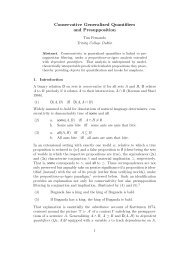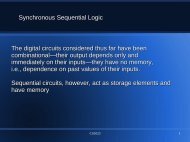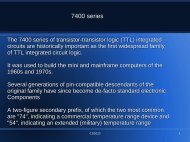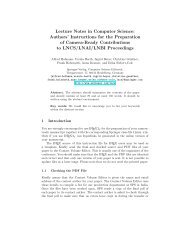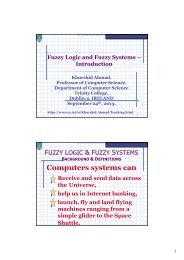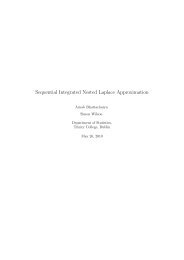Real-time Communication in Vehicular Ad Hoc Networks (VANETs)
Real-time Communication in Vehicular Ad Hoc Networks (VANETs)
Real-time Communication in Vehicular Ad Hoc Networks (VANETs)
Create successful ePaper yourself
Turn your PDF publications into a flip-book with our unique Google optimized e-Paper software.
4.3.2 Discrete Event Simulation<br />
Accord<strong>in</strong>g to the particular logical facets that a system <strong>in</strong>tends to represent,<br />
simulation models can artificially be categorized as cont<strong>in</strong>uous simulation<br />
models and discrete simulation models [36].<br />
In cont<strong>in</strong>uous simulations the state of the system changes cont<strong>in</strong>uously with<br />
<strong>time</strong> elaps<strong>in</strong>g, as illustrated <strong>in</strong> Figure 4.2. The state change of a cont<strong>in</strong>uous<br />
system can be described by some known differential equations.<br />
Figure 4.2 Cont<strong>in</strong>uous Simulation Model<br />
On the other hand, the state of a discrete system changes just only at a<br />
discrete set of selected <strong>time</strong> po<strong>in</strong>ts (or say moments) <strong>in</strong> a determ<strong>in</strong>ed period<br />
[49], as shown <strong>in</strong> Figure 4.3. For <strong>in</strong>stance, <strong>in</strong> a traffic model<strong>in</strong>g scenario,<br />
vehicle arrival at a certa<strong>in</strong> po<strong>in</strong>t that occurs at dist<strong>in</strong>ct po<strong>in</strong>ts <strong>in</strong> a scheduled<br />
period can be considered as an event. A unit <strong>in</strong> a traffic environment, e.g. a car,<br />
32




